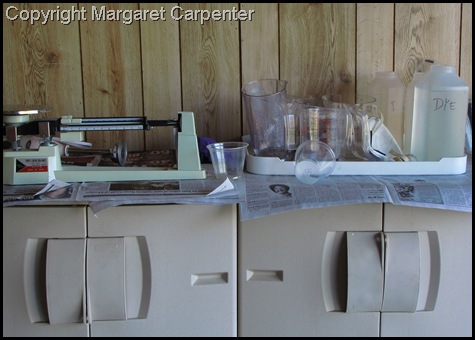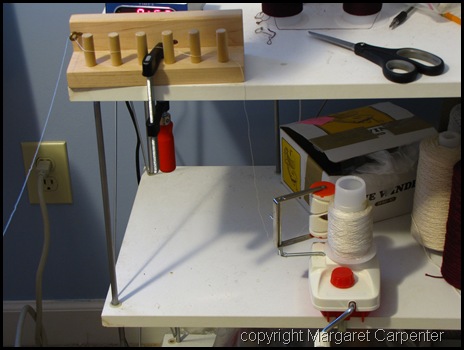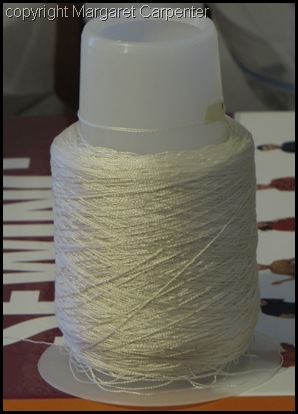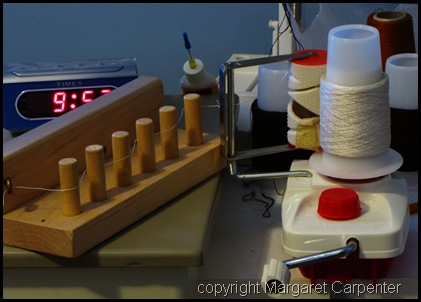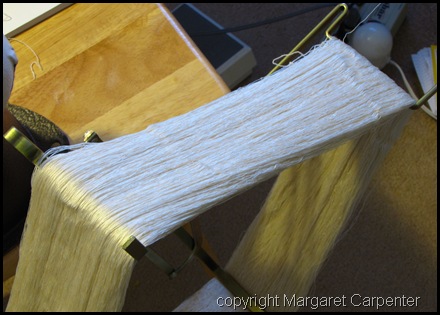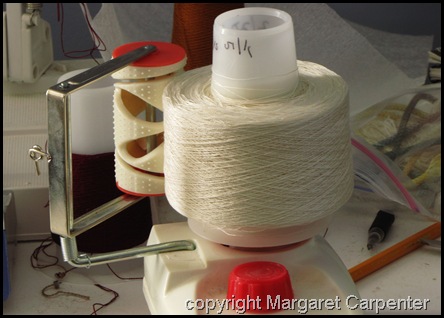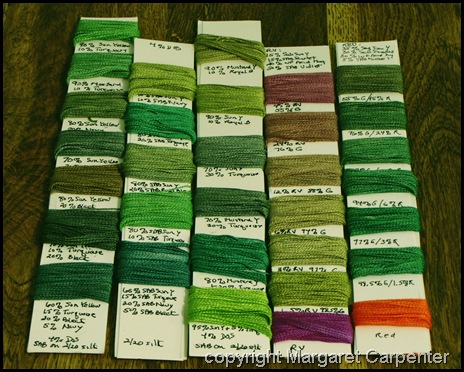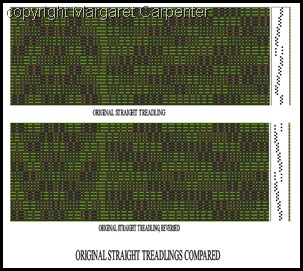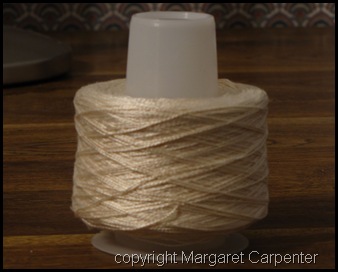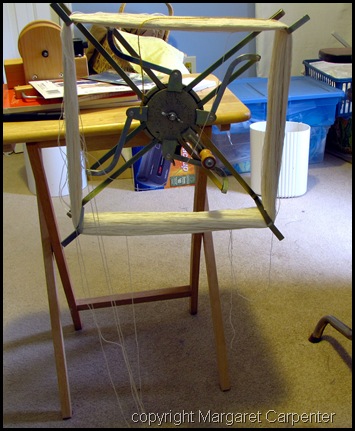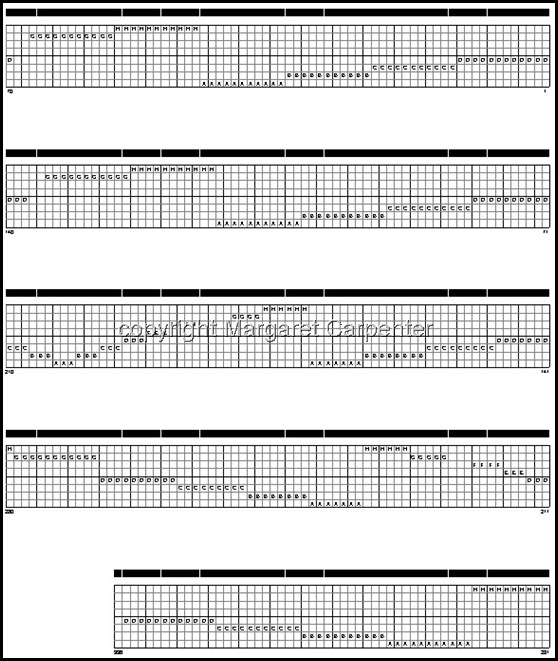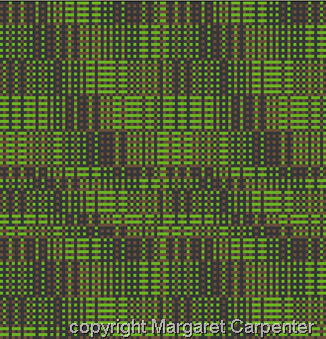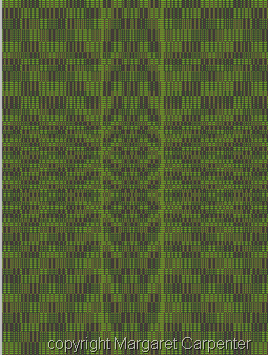Posted by Peg in South Carolina
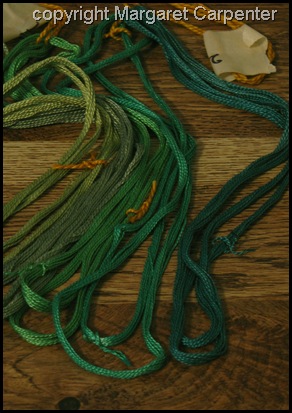
When I looked at the first two sets of green samples, I saw some gaps I was interested in filling in. These are the results.
The orange doubled loop visible at the top of the photo is what I used to loop through a skein (one through each skein) to make it easy to dip the individual skeins in and out of each of its Mason jar dye baths.
NUMBERING THE SKEINS
The piece of paper with the number 2 written on it is a piece of masking tape. After I removed a skein from the dye and rinsed it I put a piece of masking tape on the doubled loop with an identifying number from 1-7. These numbers referred to the formulas I used for the dyeing.
Numbering them makes it much easier for me to know which finished skein goes with which formula. I don’t always have to do this because sometimes it is very clear. In dye pots of yellow and blue, where I simply varied the amount of blue in the five or seven dye pots, it is very easy to distinguish one from another. But these recipes were more diverse and complex. I did not trust my eyes.
STARTING THE NEUTRAL SAMPLINGS
Since there were only five greens I wanted to try, I had room for two more colors, so I started on the set of neutrals.
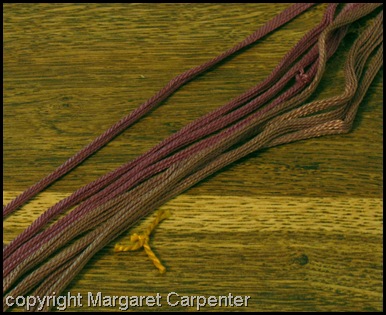
The two colors I am using in this set to achieve neutrals are yellow-green and red-violet. The reddish one on the left has 45% red-violet. The browner one next to it has only 24% red violet. I had anticipated that it would take less than half of the red-violet to brown the green because red is a very strong color. I didn’t realize that I would have to drop it down to 1/4 of the total mount. Red is really a dominating color.
PHOTOGRAPHY NOTE
For those who notice (and care about) such things, I took the two photos on the same table in the same light. In the top photo, the color of the table is pretty close to what it is in reality. In the bottom photo, the color is much more yellow.
This color cast happened because to correct the color balance for the skeins in my software, I had to move the color cast to cyan and to green. This removed the excess reddish cast but it also removed the reddish cast from the table and so turned it into a yellow-brown.
Playing with lightness and saturation in the two photos also affected the tables differently.
There are ways of dealing with this problem, but they are time-consuming and, quite frankly, I don’t care what the table looks like in the photo!
Some time I might try white paper, but I’m not sure I would like the strong contrast between background and skeins that would happen. Of course, trying it is the only way to find out!
Related Post: Two Sets of Greens Done
“Last Green Samples“ was written by Margaret Carpenter for Talking about Weaving and was originally posted on October 2, 2009. ©2009 Margaret Carpenter aka Peg in South Carolina.
